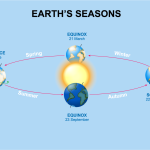The Hubble Space Telescope, always watchful in its examination of the cosmos, has once again astounded us with a remarkable finding. Presently, instead of a magnificent galaxy or a whirling nebula, there is an unusual radiance originating from a remote region of space—a phenomenon commonly referred to as “forbidden light.”
Forbidden light refers to a certain concept or entity that is prohibited or not allowed.
Within the domain of quantum physics, atoms and their electrons exhibit adherence to precise principles. These principles govern the permissible energy levels that electrons can inhabit and determine the allowable transitions between these levels. The phenomenon of “Forbidden light” occurs due to transitions that defy the established norms of possibility. It resembles a performance by a magician on stage who is deliberately disregarding the principles of physics—a compelling accomplishment!
What is the mechanism of its existence?
How can anything that is considered “forbidden” possibly exist? The solution can be found in the highly challenging conditions present in the vast expanse of outer space. Blazing celestial bodies and very energetic jets emit powerful radiation, resulting in extraordinary circumstances that are unparalleled on Earth. These circumstances can induce the excitation of electrons into energy levels that are typically inaccessible, resulting in the emission of light that is normally prohibited.
Hubble’s Cosmic Catch:
The most recent image taken by the Hubble telescope displays the emission of this prohibited light originating from a spiral galaxy located around 275 million light-years distant. The detected “forbidden light” originates from oxygen, indicating its existence in the galaxy’s high-temperature intergalactic medium.
Beyond Aesthetics:
This perception transcends mere visual spectacle. It provides significant information on the structure and movement of the galaxy, enabling scientists to examine its processes of star formation and gas movement. Furthermore, it offers insights into the development of galaxies throughout cosmic chronology, since prohibited light can reveal the existence of materials created in colossal stars that lived billions of years in the past.
The lasting impact of Hubble:
This finding confirms the remarkable capabilities and lasting impact of the Hubble telescope. For more than thirty years, this renowned telescope has observed the vast expanse of the universe, revealing its mysteries and pushing the boundaries of our comprehension of the cosmos. Despite the emergence of advanced telescopes, Hubble consistently astounds us with its capacity to identify dim and transient occurrences, serving as a reminder of the immense expanse and awe-inspiring nature of the cosmos.
Transcending Prohibited Radiance:
Studying the phenomenon of forbidden light is but one of several ongoing endeavors aimed at comprehending the cosmos. With the continuous progress of technology and the increasing sensitivity of telescopes, we may anticipate the discovery of further unexpected phenomena. This will expand the limits of our understanding and stimulate our profound fascination and inquisitiveness about the universe. When you look at the starry sky in the future, keep in mind that there may be concealed, forbidden secrets within its blackness, waiting to be uncovered.
Additional credit:
The particular kind of light that Hubble has detected and is not allowed is referred to as “[O III]” (pronounced “oxygen three”). There are several forms of light that are prohibited, which are released by different components under specific circumstances. Examining the characteristics of black holes and their adjacent accretion disks can be facilitated by investigating the features of forbidden light.
The cosmos is filled with several enigmas, and Hubble’s detection of prohibited light serves as a reminder that even phenomena that appear implausible can nevertheless exist inside the immense realm of space. Therefore, maintain a constant upward gaze and be ready to be astounded by the marvels that lie ahead in the vast expanse of the cosmos.








